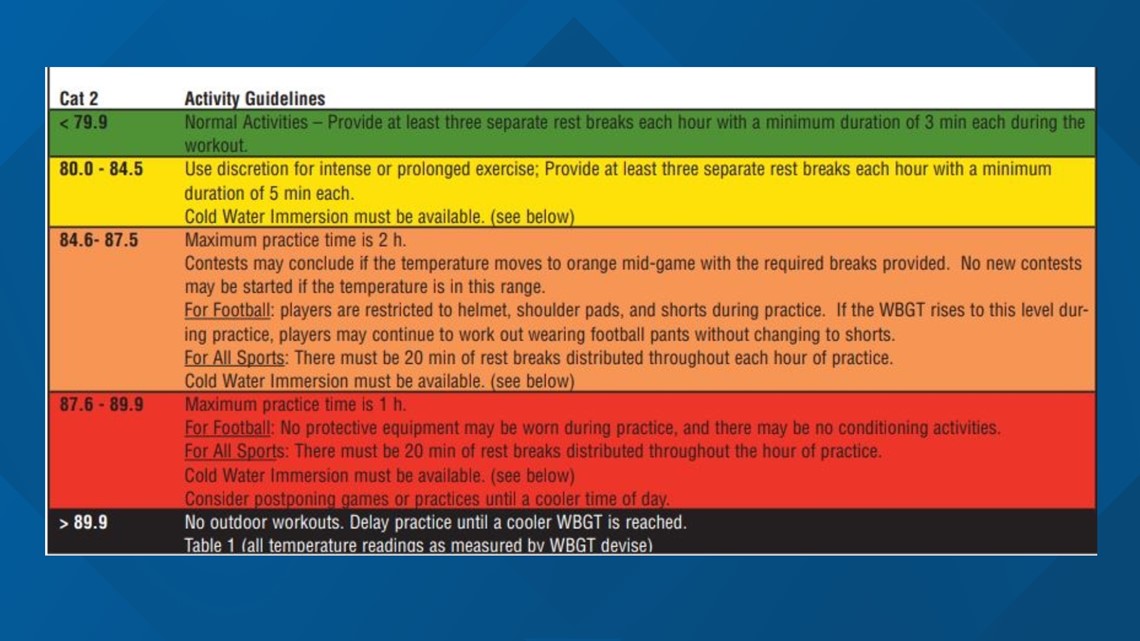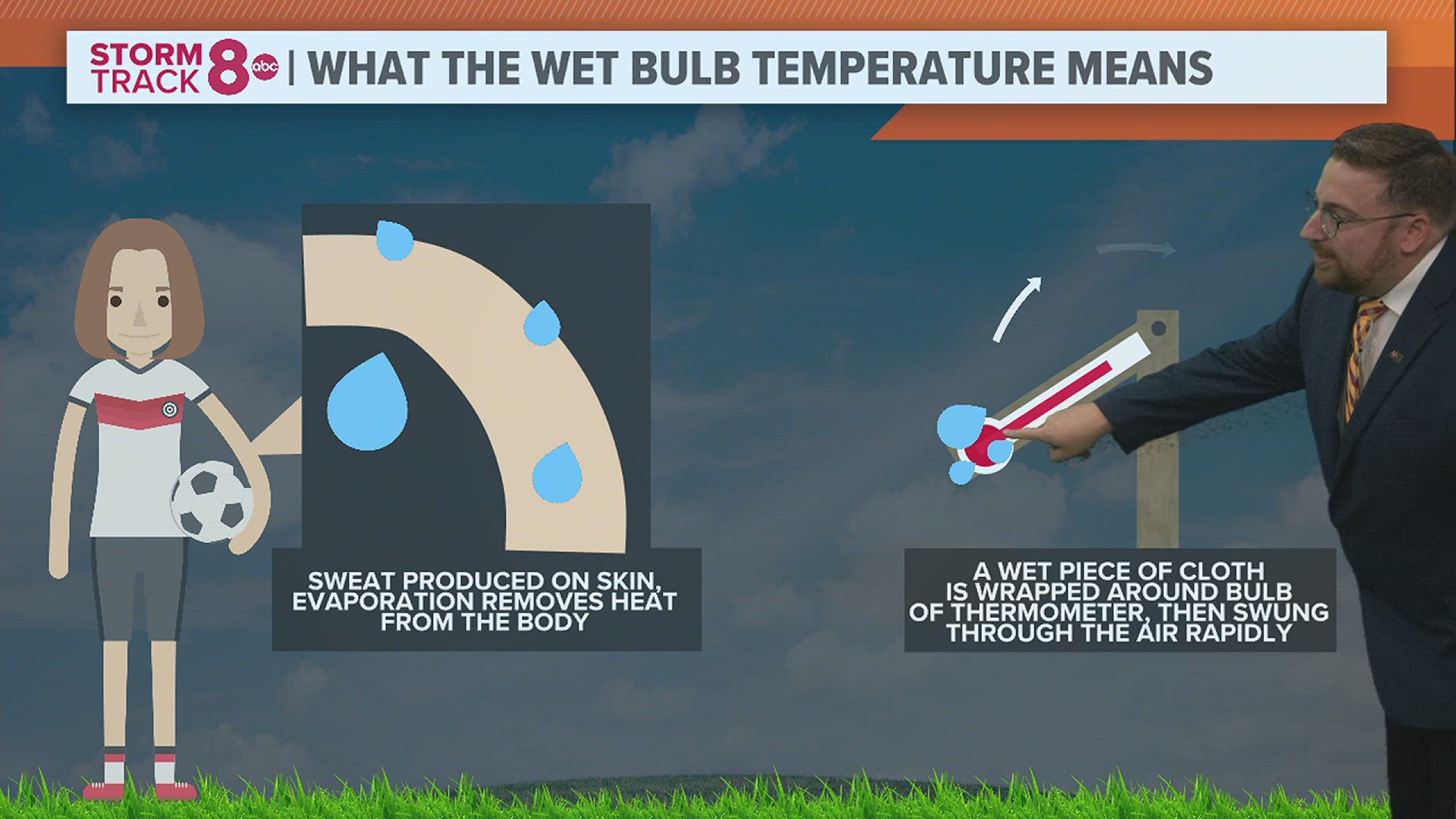MOLINE, Ill — Our recent stretch of record-setting heat and humidity had a lot of us rethinking outdoor plans, whether it was for work or pleasure. The combination of both factors led the National Weather Service to issue an excessive heat warning for a three-day period in the Quad Cities as the heat index, or "feels like" temperature, soared past 110° for several hours each day. Even the Illinois High School Association advised that athletic activities should be held inside an air-conditioned facility. However, it was not just the heat index alone that the IHSA used to make this determination. They also used what's called the wet bulb globe temperature.
What is the wet bulb globe temperature?
We know the heat index is calculated using a combination of the current temperature and dew point temperature. You can also use relative humidity, too. The wet bulb temperature, however, takes things a step further. It uses not only the temperature and humidity but also takes into account the wind speed and sun angle, along with any cloud cover. How do we do this easily? Let's take a look at the equipment.


A sling psychrometer is a device that contains two thermometers. However, they both serve a different purpose. One thermometer measures the wet bulb temperature because a wick that has been soaked with water is applied to the bottom of the globe of the thermometer. The other is referred to as the dry bulb temperature. What is the point of the wet wick? It is used to simulate the sweat evaporation process that occurs with our skin, which is how we naturally cool off. As that water evaporates, it lowers the temperature of the surface it is evaporating on. To measure this, the device is spun rapidly in a circle and then a temperature reading is taken from both monitors.


The higher the wet bulb temperature, the more difficult it is for evaporation to take place. You may recall in a previous Ask Andrew that we mentioned why we feel so uncomfortable during the summer months when high levels of moisture are present. The reason? When the air is already saturated with water vapor, it is much harder for even more water to fill it. So, the process of evaporating water from the surface of our skin slows to a crawl and we can't efficiently cool down.
The Illinois High School Association uses the above reference chart to determine the risk of heat-related illness. This is more effective than using the heat index because you are measuring direct impacts on the body in terms of heat stress. For many on both Tuesday and Wednesday, that number was extremely elevated, equating to a high risk of heat-related illness in a short period.
Have a question that you would like me to answer for an upcoming Ask Andrew segment? Submit it, here.

